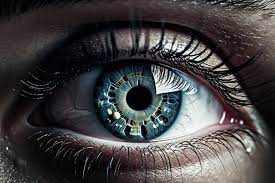Melissa, a 30-year-old educator, experienced sudden double vision and sought emergency care. With no history of trauma or prior vision issues, she had previously dismissed a brief episode of blurred vision as fatigue. However, further tests revealed something much more serious: multiple sclerosis. Melissa’s case, while alarming, is not unique. It highlights how the eyes can often be the first indicators of underlying health conditions.
For 30 years, as an optometrist, I’ve encountered many patients whose eye symptoms have uncovered hidden illnesses. Certain eye changes can provide vital clues to systemic health issues, enabling early diagnosis and intervention.
Diabetes: Silent but Detectable
Diabetes, projected to affect nearly 8% of the population by 2030, often remains undiagnosed for years. Regular eye exams can identify characteristic lesions at the back of the eye before patients experience other symptoms. Early detection is crucial: within five years of diagnosis, 25% of patients with Type 1 diabetes and 40% of those with Type 2 can develop eye lesions that may severely impair vision. Timely monitoring and treatment can significantly reduce the risk of blindness.
High Blood Pressure and Cholesterol: Hidden Dangers
Known as the “silent killer,” high blood pressure and high cholesterol quietly increase the risk of heart disease and stroke. The eye is unique in that it allows non-invasive observation of blood vessels, revealing early signs of these conditions. High blood pressure can cause visible changes in the retina, while cholesterol can form deposits in both the eye’s blood vessels and cornea. Left unchecked, these conditions can lead to serious cardiovascular events.
Glaucoma: The Stealthy Thief of Sight
Glaucoma, often called the “silent thief of sight,” causes damage to the optic nerve, leading to gradual loss of vision. Most people are unaware of the condition until their peripheral vision is already compromised. Another variant, normotensive glaucoma, occurs without increased eye pressure but is linked to conditions like low blood pressure or sleep apnea. Early detection can help slow progression and prevent irreversible vision loss.
Cancer: The Disease of the Century
Eye exams can also reveal signs of cancer. For instance, retinoblastoma, a cancer affecting the eye, may metastasize to the lungs or liver. Other retinal abnormalities can signal colon cancer or brain tumors, such as pituitary adenomas. These cancers often develop without early symptoms, making regular eye checks critical for timely intervention.
Conclusion: The Eyes, Windows to Your Health
Rather than simply being mirrors of the soul, the eyes can serve as windows into overall health. Regular eye exams, even when no symptoms are present, can help detect and treat a range of conditions early, minimizing the risk of severe illness or even death.
As Melissa’s story demonstrates, maintaining eye health through routine check-ups with an optometrist can uncover more than just vision issues. Early detection is a powerful tool in the fight against many life-threatening diseases.










